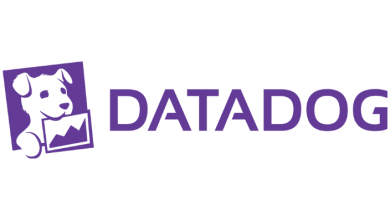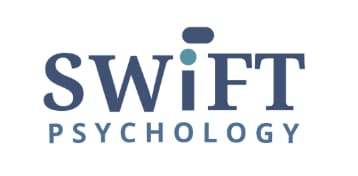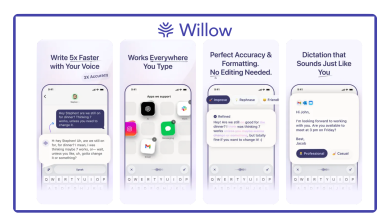
Imagine asking your AI assistant for the latest sales forecast or company policy and getting either irrelevant documents or incomplete answers. Despite the rise of tools like Microsoft Copilot and Google Gemini, employees still struggle to find the information they need.
The problem isn’t with the AI itself. It’s the data feeding it. Fragmented, outdated, and poorly indexed knowledge repositories prevent even the smartest assistants from delivering reliable insights. In today’s enterprises, search is no longer a background utility. It’s the engine powering AI transformation.
According to the 2024 Gartner Digital Worker Survey, 34% of employees struggle to find the information they need, while nearly half (49%) rely on AI tools like Microsoft 365 Copilot and Google Gemini primarily for data retrieval. Yet, even with these tools, 36% of users still report difficulty accessing relevant insights. These figures reveal a critical reality: AI assistants can only be as effective as the quality, accessibility, and integration of the data they draw from. Enterprise AI search is key to the enabling the efficient, effective, trustworthy agentic AI transformation.
Why Enterprise AI Search Matters More Than Ever
AI assistants thrive on context. Retrieval-Augmented Generation (RAG), a method that combines large language models with enterprise data and promises context-aware, real-time responses. Yet RAG’s effectiveness is limited by the quality of the underlying knowledge base. Common pitfalls include:
- Redundant, outdated, or trivial content (ROT) that confuses AI tools.
- Siloed data across ERP/CRM/ECM systems, documents, emails, and cloud apps.
- Weak governance, leaving it unclear what content is accurate or relevant.
Without addressing these gaps, AI assistants can appear intelligent while providing incomplete or misleading guidance, undermining trust across the organization.
Breaking Down Siloed AI Agents
By 2028, Gartner predicts that 60% of organizations will operate more than six enterprise AI search or assistant platforms. Yet without a unified search foundation, these agents risk becoming fragmented, inconsistent, and ineffective.
Siloed AI agents create parallel workflows, duplicate efforts, and inconsistent results—eroding trust in AI capabilities. The answer lies in a single, governed search layer that connects and harmonizes data across platforms. A unified approach ensures:
- Connects and synthesizes data across systems.
- Reduced redundancy in data access and processing.
- Delivers consistent and trusted answers across all agents.
- Scalable knowledge delivery as AI adoption grows.
The future of enterprise AI depends not on the number of assistants deployed but on the quality and integration of the search foundation that powers them. A unified search foundation doesn’t just improve retrieval. It transforms assistants into true agents capable of decision-making and proactive action.
From Reactive Search to Proactive Insights
Gartner predicts that by 2028, 80% of workplace knowledge delivery will shift from reactive search to proactive synthesis with AI agents delivering insights before users even ask. To realize this future, enterprises must rethink search as an embedded, intelligent layer rather than a static interface.
Key capabilities include:
- Intent recognition: Understanding what users mean, not just what they type.
- Silo-spanning synthesis: Connecting information across systems and departments.
- Real-time context: Delivering up-to-date insights based on workflow, role, and location.
In this sense, search becomes invisible yet indispensable, powering assistants, chatbots, and intelligent agents across the enterprise.
Practical Steps for Technology Leaders
These four steps form a strategic blueprint for embedding intelligent search into your enterprise’s AI strategy:
1. Audit Your Information Landscape — Inform & Focus
Begin by understanding your current knowledge ecosystem and how it supports AI agents. This step addresses two core Agentic AI strategies: informing agents and focusing on retrieval.
- Map where search is embedded and identify where AI assistants already interact with information.
- Assess which assistants fail to deliver reliable answers and why — look for gaps in context, integration, or governance.
- Identify silos and disconnected datasets that block comprehensive knowledge access.
- Ensure agents have access to all critical knowledge sources, including structured systems, documents, Slack, SharePoint, and subscription services.
- Evaluate the formats of your data — ensure your systems support multimodal inputs (text, tables, voice, images).
- Identify opportunities for hybrid retrieval that blends vector, keyword, graph, text-to-SQL, and multimodal approaches for precision and scale.
2. Clean Up Content — Personalize
Content quality directly impacts the trust and accuracy of Agentic AI. This step ties directly to personalization and relevance.
- Remove ROT content (redundant, outdated, trivial) that misleads AI tools.
- Promote APT content: Accurate, Pertinent, Trusted.
- Establish ongoing content governance practices to maintain data quality.
- Enrich content with corporate vernacular, taxonomies, synonyms, acronyms, and departmental nomenclature to give agents deeper contextual understanding.
- Ensure your RAG pipelines are designed to analyze intent, tailor queries, select relevant sources, and enrich prompts with user-specific context.
3. Invest in AI-Ready Search Infrastructure — Equip
Infrastructure is the foundation for building Agentic AI. This step involves equipping agents with the tools they need to deliver actionable intelligence.
- Prioritize platforms with semantic understanding for context-rich retrieval.
- Ensure deep integration with enterprise applications so agents can operate across workflows.
- Enable generative AI synthesis to support advanced assistant capabilities.
- Support application and tool integration so agents cannot just answer questions but take action — submit requests, schedule tasks, or access operational systems.
- Consider emerging interoperability protocols (e.g., Anthropic’s MCP) to future-proof agent integration.
4. Design for Scale — Govern
Scaling Agentic AI requires strong governance and orchestration so that the system remains reliable, secure, and compliant. This step integrates the governing strategy.
- Build flexible architecture that support multiple assistants over time.
- Ensure infrastructure can handle growing data volumes and user demand.
- Embed AI assistants into workflows, not as extra steps, to maximize adoption.
- Implement an orchestration platform to manage your agent ecosystem, ensuring:
- Security and access control
- Observability and monitoring of agent performance
- Traceability and versioning of knowledge and agents
- Usage tracking to measure value and optimize operations
- Select a governance approach that scales, especially for the most critical agents, to maintain trust and reliability in your Agentic AI ecosystem.
The Bottom Line
The AI revolution isn’t just about smarter bots. It’s about better decisions, faster outcomes, and empowered teams. But without a strong, intelligent search layer, even the most sophisticated AI tools are limited. Before blaming the assistant for poor results, organizations must fix the search infrastructure.
Enterprise search is the strategic foundation for AI transformation. By investing in clean, connected, and governed knowledge, companies can unlock the true potential of AI assistants and transform information overload into actionable intelligence. For business leaders, investing in a unified, intelligent search infrastructure isn’t just a technology decision, it’s a competitive mandate for the AI era.
Author:
Laurent Fanichet is head of marketing, North America for Sinequa by ChapsVision. Learn more at sinequa.com.



